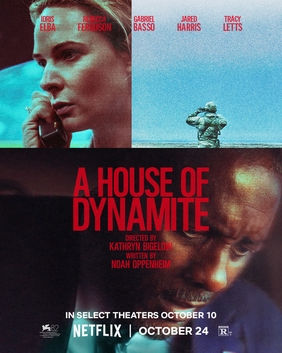The Killer - With Sequences Like These, Who Needs Acts?
- andy8534
- Mar 4, 2024
- 4 min read
Updated: Mar 5, 2024
“Of those who like to put their faith in mankind's inherent goodness, I have to ask... based on what exactly?” –The Killer

Reminiscent of the detached films of yore, particularly Herman Melville’s anti-hero thrillers, for script dive purposes, The Killer is a great look into a story built around sequences.
Divided into chapters, The Killer follows a simple linear story of the no-name Killer, a professional assassin who lives by a strict code.
Kicking off the narrative is a botched assassination attempt, which is followed by several chapters of the killer’s elimination of actual and potential threats.
This first chapter/sequence (Paris) gives us insight into the routine and discipline it takes to do this kind of work as well as the personal philosophy, ruminations about the meaning of his existence, the world around him, the purpose and impact of his work, and through his VO his view on life. “Since the beginning of history, the few have always exploited the many. This is the cornerstone of civilization. The blood in the mortar that binds all bricks,” he states. Followed by, “Whatever it takes... make sure you're one of the few, not one of the many.”
The Killer, of course, sees himself as one of the few.
The second sequence takes place in the Dominican Republic. Here, he discovers that his beach hide-out has been broken into, and his girlfriend has been attacked and severely injured. This sets off the remainder of the story. He tracks down the taxi driver who drove the attackers and provides him with intel about them before sending him off to permanent sleep.
New Orleans is next. Third sequence and where the Killer confronts his handler, Hodges, and disposes of both him and his assistant after finding out who ordered the job. He Indulges the assistant’s plea to make it look like an accident so her kids can collect life insurance. It’s his ‘pat the dog’ moment and a departure from his “empathy is weakness” philosophy.
Sequence four takes place in Florida, where he takes out one of the attackers, aka The Brute, who is indeed a brute and not easy to eliminate, providing an action-filled sequence with dogs, sleeping pills and Molotov cocktails.
The next event (5) takes place in upstate NY, where he confronts and eliminates Brute’s partner, Q Tip, the female assassin, but not before letting her enjoy her last supper and a generous flight of Whisky. Is he showing more empathy? Is he slipping by confronting her in public, at a restaurant?
The sixth and final sequence takes place in Chicago, where he breaks into the penthouse of the client, investment banker Claybourne, whose job he botched. But, being that the target is a billionaire and that on the way he ruminates, “cops tend to match their effort in direct proportion to the victim's net worth,” he concludes that the risk is not worth the effort and lets the banker off the hook. No empathy here. Pure pragmatism. He wants to be done and not attract that much heat.
But heat of a different kind he finds. In the epilog, namely, which takes place in the Caribbean at his Dominican retreat, where he’s sipping espresso with the now healed girlfriend and concludes that he is, just like us, one of the many, not the few. Minor arc, this.
Our Killer doesn’t believe in luck or karma, or so he states at the start when he’s still a hidden predator who --we are led to believe-- is in charge of everything. But, as life happens, the best-laid plans often go to crap. Even for an assassin. And that’s a good thing…for the story... since his botched assassination not only sets the rest of the story in motion but also provides the necessary tension.
Due to its exact portrayal of an assassin’s routine, the film has been compared to Melvill’s Le Samourai. The plot, however, seems closer to Apocalypse Now—an assassin on a mission to kill the target, dealing with obstacles along the way. But unlike Willard, who does kill Kurtz, this Killer gets cold feet and lets Clybourne off with a warning. This felt like a de-escalation. On an intellectual level, we get the why. But on a gut level, it felt like a letdown.
Despite the Killer being a killer, we root for him because we’ve been riding his POV since the beginning. But he’s no Willard, and Claybourne is no Col. Kurtz. The big reveal is that there is no big reveal. This is not the Vietnam war, it’s a selfish dog assassinate dog unless it’s a rich dog world.
An element that could have helped the gut level is if someone had been pursuing the Killer. A cop, another assassin, etc. Because as it is, he doesn’t encounter major obstacles. The conflict is inherent in the situation and events, and, with the exception of The Brute, things go rather smoothly for him. Another character who messes things up for him along the way and appears at the worst moment could have elevated the tension and escalated the final sequence into a bigger and more satisfying event.
Written by Andrew Kevin Walker
Directed By David Fincher
Based on the graphic novel by Alex Matz Nolent, illustrated by Luc Jacamon.
Key cast - Michael Fassbender, Charles Parnell, Tilda Swinton, Kerry O’Malley, Sala Baker, Arliss Howard



